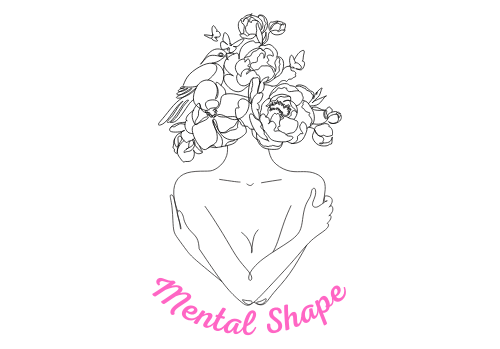In this article, you will discover different effective journaling techniques that can help you embark on a journey of self-reflection. Journaling is not just about recording your daily experiences, but it can also be a powerful tool for self-discovery and personal growth. By using these techniques, you will be able to explore your thoughts and emotions, gain insights into yourself, and ultimately, create a deeper understanding of who you are. So, grab a pen and paper, and let’s dive into the world of journaling for self-reflection!
Benefits of Journaling for Self-Reflection
Writing in a journal can have many positive effects on self-reflection. By taking the time to reflect on your thoughts and experiences, you can gain a deeper understanding of yourself and your emotions. Here are just a few of the benefits you can experience through journaling:
Improved self-awareness
Journaling allows you to explore your thoughts and feelings in a structured way. By putting your thoughts on paper, you can gain a clearer understanding of your emotions and how they may be affecting your daily life. This increased self-awareness can help you make more informed decisions and better understand your reactions to different situations.
Enhanced problem-solving skills
Writing out your thoughts and problems can help you gain a fresh perspective on any challenges you may be facing. By organizing your thoughts and exploring different solutions, you can enhance your problem-solving skills and come up with creative solutions that you may not have considered before.
Increased emotional intelligence
Journaling can also improve your emotional intelligence, which is the ability to understand and manage your own emotions as well as recognize and empathize with the emotions of others. By reflecting on your emotions and experiences, you can develop a greater sense of empathy and emotional awareness, allowing you to navigate relationships and situations with more understanding and compassion.
Setting Up Your Journaling Routine
In order to get the most out of your journaling practice, it’s important to establish a routine. This will help you make journaling a habit and ensure that you are consistent in your self-reflection efforts. Here are some steps you can take to set up your journaling routine:
Choose a journaling format
There are many different formats you can choose from when it comes to journaling. Some people prefer to write in a traditional notebook, while others may prefer to use a digital journaling app. Consider what format works best for you and your lifestyle. Remember, the most important thing is that you feel comfortable and able to express yourself freely.
Designate a regular time and place
Find a time and place where you can journal without interruptions. Whether it’s in the morning before starting your day or in the evening before bed, setting aside a specific time for journaling can help you create a consistent routine. Additionally, having a dedicated space, such as a quiet corner of your home or a favorite coffee shop, can help create a sense of calm and focus during your journaling sessions.
Gather writing materials
Make sure you have all the necessary materials before you begin journaling. This may include your chosen journaling format, whether it’s a notebook, app, or other medium, as well as pens, pencils, or any other writing tools you prefer. Having everything you need on hand will help you stay focused and avoid unnecessary interruptions during your self-reflection process.

Journaling Prompts for Self-Reflection
Sometimes, it can be helpful to have some prompts to help guide your journaling sessions. These prompts can provide a starting point and help you delve deeper into your thoughts and emotions. Here are a few journaling prompts for self-reflection:
Reflecting on personal values
Write about your core values and their importance to you. Reflect on how you incorporate these values into your daily life and any challenges you may face in staying true to them.
Exploring emotions and triggers
Consider a recent situation that elicited strong emotions in you. Write about the emotions you felt and try to uncover any underlying triggers or patterns that may have contributed to those emotions.
Analyzing past experiences
Choose a significant past experience and reflect on how it has shaped you as a person. Consider both the positive and negative aspects of the experience and how it has influenced your beliefs, behaviors, and goals.
By engaging with these prompts, you can gain a deeper understanding of yourself and develop greater self-awareness and emotional intelligence.
Visualization Techniques in Journaling
In addition to writing, journaling can also incorporate visualization techniques to further enhance your self-reflection process. Visualization can help you tap into your imagination and enhance your ability to create a vivid mental picture of your desires and goals. Here are some visualization techniques you can incorporate into your journaling practice:
Creating a vision board
A vision board is a visual representation of your goals and desires. In your journal, you can create a mini version of a vision board by cutting out images from magazines or printing them from the internet and pasting them onto the pages. These images should represent the things you want to achieve or attract into your life. By regularly looking at your vision board, you can keep your goals at the forefront of your mind and stay motivated to work towards them.
Writing affirmations
Affirmations are positive statements that can help shift your mindset and increase self-belief. In your journal, write down affirmations that resonate with you and reflect on why they are important to you. Repeat these affirmations regularly to reinforce positive thinking and reprogram any negative self-talk.
Engaging in guided imagery
Guided imagery involves closing your eyes and using your imagination to create detailed mental images. In your journal, write a description of a desired outcome or situation, incorporating as much sensory detail as possible. Take your time to imagine yourself in that situation and fully immerse yourself in the experience. This technique can help you get clarity on your goals and build confidence in your ability to achieve them.

Artistic Expressions in Journaling
If you’re looking for alternative ways to express yourself in your journal, consider incorporating artistic techniques. Artistic journaling allows for a more visual and creative form of self-reflection. Here are some artistic expressions you can explore in your journal:
Sketching or doodling
If you enjoy drawing or doodling, use your journal as a canvas. Let your imagination flow and create sketches or doodles that represent your thoughts, emotions, or experiences. This visual form of expression can provide a different perspective and allow your creativity to flourish.
Collage making
Collages are a great way to visually represent your thoughts and feelings. Cut out images or words from magazines, newspapers, or printed materials and create a collage on the pages of your journal. Arrange the images in a way that resonates with you and tells a story about your thoughts and experiences.
Writing poetry or prose
If you have a knack for writing, consider incorporating poetry or prose into your journaling practice. Use your journal as a space to experiment with different writing styles and explore your thoughts and emotions through the written word. This can be a cathartic and expressive way to engage in self-reflection.
By incorporating artistic expressions into your journaling routine, you can tap into your creativity and explore different ways of expressing and processing your thoughts and emotions.
Gratitude Journaling for Self-Reflection
Practicing gratitude is a powerful way to cultivate positivity and enhance your self-reflection process. Gratitude journaling involves intentionally focusing on the things you are grateful for in your life. Here are some ways you can incorporate gratitude into your journaling routine:
Writing daily gratitudes
Set aside some time each day to write down three things you are grateful for. They can be big or small, from significant achievements to simple moments of joy. By shifting your attention to the positive aspects of your life, you can cultivate a greater sense of appreciation and contentment.
Reflecting on moments of joy
In addition to daily gratitudes, take some time to reflect on specific moments of joy or happiness that you have experienced recently. Write about these moments in detail, exploring how they made you feel and why they were meaningful to you. This reflection can help you create a positive mindset and foster a greater appreciation for the good things in your life.
Expressing appreciation for oneself
In your journal, write down positive qualities and achievements that you appreciate about yourself. Take the time to reflect on your strengths, accomplishments, and the progress you have made. This exercise can boost self-esteem and reinforce a positive self-image.
By practicing gratitude journaling, you can shift your focus towards the positive aspects of your life and develop a greater sense of gratitude, contentment, and self-appreciation.
Using Prompts for Self-Analysis
In addition to prompts for self-reflection, you can also use prompts for self-analysis. These prompts can help you delve deeper into your thoughts and behaviors and gain a better understanding of yourself. Here are a few prompts you can use for self-analysis:
Identifying limiting beliefs
Write about any beliefs or thoughts that may be holding you back from reaching your full potential. Reflect on where these beliefs originated and how they have influenced your actions and decisions. By acknowledging and challenging these limiting beliefs, you can create a path for personal growth and development.
Reflecting on personal growth
Consider how you have grown as a person over the past year or any specific period of time. Write about the challenges you have overcome, the lessons you have learned, and the progress you have made. Reflect on how these experiences have shaped you and the goals you have for future growth.
Analyzing patterns and habits
Identify any patterns or habits that you notice in your thoughts, behaviors, or relationships. Write about these patterns and explore their impact on your life. By recognizing these patterns, you can make more informed decisions and work towards creating positive change.
By using prompts for self-analysis, you can gain a deeper understanding of yourself and your motivations, and identify areas for personal growth and improvement.
Journaling for Goal Setting and Progress Tracking
Journaling can be a powerful tool for setting and tracking your goals. By regularly writing down your goals and reflecting on your progress, you can stay motivated and make adjustments when necessary. Here are some steps you can take to journal for goal setting and progress tracking:
Defining goals and action steps
Begin by identifying your goals and breaking them down into smaller, actionable steps. Write down your goals in your journal, along with the specific actions you need to take to achieve them. This helps create a clear roadmap for success and allows you to track your progress along the way.
Tracking progress and setbacks
Regularly review your goals and track your progress in your journal. Write about any milestones you have reached, challenges you have faced, and lessons you have learned. Acknowledge your successes and identify any setbacks or obstacles that you may need to overcome. This helps you stay accountable and adapt your approach as needed.
Adjusting goals when necessary
As you review your progress, you may find that your goals need to be adjusted. This is a natural part of the goal-setting process, and it’s important to be flexible and open to change. In your journal, reflect on any changes that may be necessary and update your goals or action steps accordingly. This allows you to stay on track and continue working towards what truly matters to you.
By using journaling as a tool for goal setting and progress tracking, you can stay focused, motivated, and accountable throughout your personal growth journey.
Using Questions for Self-Reflection
Asking yourself thoughtful questions can deepen your self-reflection and help you gain insights into different aspects of your life. Here are some questions you can ask yourself during your journaling sessions:
What are my strengths and weaknesses?
Reflect on your personal strengths and weaknesses. Consider how these qualities have influenced your successes and challenges. By gaining a deeper understanding of your strengths and weaknesses, you can leverage them to your advantage and work on areas for improvement.
What impact did my actions have on others?
Think about the impact your actions have had on the people around you. Consider both positive and negative interactions and reflect on how your behavior may have influenced others. This can help you develop greater empathy and improve your relationships with others.
How can I improve my well-being?
Reflect on the different aspects of your well-being, including physical, mental, and emotional health. Consider what changes you can make to improve your overall well-being and create a more balanced life. Write down actionable steps and goals to help you make progress in these areas.
By asking yourself these and other thoughtful questions, you can gain deeper insights into yourself and your life, and work towards personal growth and self-improvement.
Group Journaling and Peer Feedback
Journaling doesn’t have to be a solitary activity. Engaging in group journaling and seeking peer feedback can provide a new perspective and foster deeper self-reflection. Here’s how you can incorporate group journaling and peer feedback into your practice:
Sharing journal entries with a trusted group
Consider joining or forming a group of like-minded individuals who are also interested in journaling for self-reflection. Share your journal entries with the group, allowing them to gain insights into your thoughts and experiences. Likewise, read and provide feedback on the entries of others. This sharing of experiences can provide fresh perspectives and foster a sense of community and support.
Receiving constructive feedback
When sharing your journal entries with others, be open to receiving constructive feedback. This feedback can help you gain new insights, consider different perspectives, and identify blind spots in your self-reflection process. Approach feedback with an open mind and use it as an opportunity for growth and self-improvement.
Learning from other perspectives
Reading the journal entries of others can expose you to different ways of thinking and engaging in self-reflection. By embracing diverse perspectives, you can broaden your understanding of yourself and the world around you. Engage in discussions with the group to gain new insights and learn from the experiences of others.
Group journaling and peer feedback can provide a sense of community, broaden your perspectives, and deepen your self-reflection process. Consider exploring these practices to enhance your journaling experience.
In conclusion, journaling is a powerful tool for self-reflection that offers various benefits. By establishing a journaling routine, using prompts and questions for guidance, incorporating visualization techniques and artistic expressions, and engaging in gratitude journaling and self-analysis, you can gain a deeper understanding of yourself, enhance your problem-solving skills, and improve your emotional intelligence. Whether you choose to journal alone or with a group, the practice can support personal growth and provide a valuable means of self-expression. So grab a pen and paper, or open your digital journal, and embark on a journey of self-discovery through the power of journaling.

